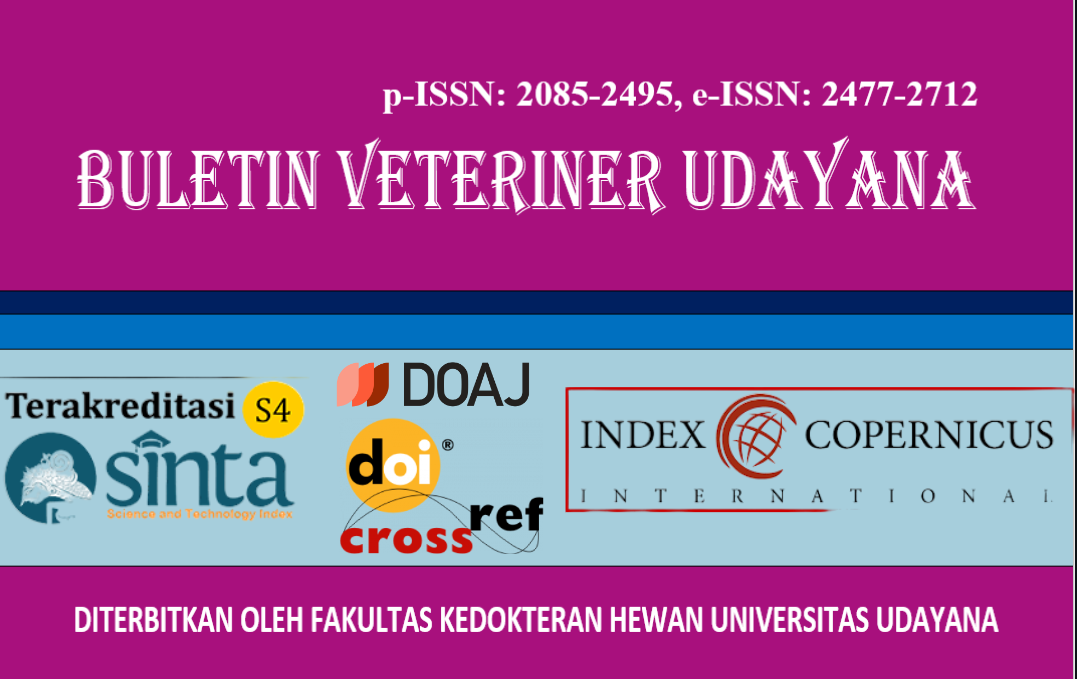CASE REPORT: CANINE MONOCYTIC EHRLICHIOSIS IN A MIX BREED DOG
DOI:
https://doi.org/10.24843/bulvet.2025.v17.i05.p20Keywords:
Ehrlichiosis, tick infestation, thrombocytopenia, sarolaner, doxycyclineAbstract
Ehrlichiosis is a tick-borne bacterial infection caused by several Ehrlichia species, including E. canis, E. chaffeensis, and E. ewingii. The bacteria are primarily transmitted by ticks of the genera Rhipicephalus and Amblyomma. A 4-year-old mixed-breed female dog named Cookie was presented with anorexia and lameness. Physical examination revealed an infestation of Rhipicephalus sanguineus ticks on the dorsal and ventral body areas and around the ears, along with mildly pale mucous membranes. Complete blood count (CBC) results indicated leukopenia, granulocytopenia, thrombocytopenia, increased mean corpuscular hemoglobin concentration (MCHC) and mean corpuscular volume (MCV), and decreased plateletcrit (PCT). Microscopic examination of a blood smear showed round, purplish-blue inclusions within the cytoplasm of monocytes. A rapid test confirmed the presence of Ehrlichia antibodies. Based on anamnesis, clinical findings, and laboratory results, the dog was diagnosed with ehrlichiosis. The treatment included sarolaner (Simparica®), doxycycline (Dohixat®), and multivitamins (Livron B-plex®). After 28 days of therapy, the dog showed marked clinical improvement, with normal appetite and hematological parameters returning to reference ranges.




